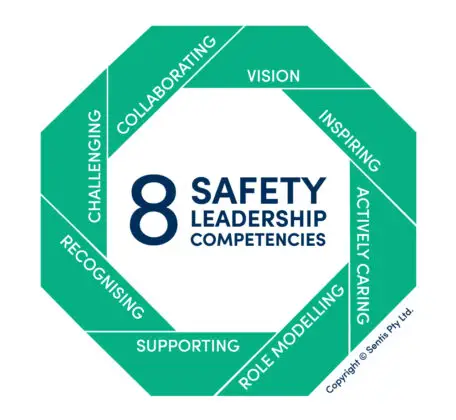Leadership impacts every facet of an organisation’s safety culture, including the attitudes and behaviours of team members, how teams interact with procedures and safety rules, as well as the physical work environment. With this in mind, it’s concerning to know that only 1 in 4 leaders demonstrate strong safety leadership behaviours.
So, if leaders set the tone of the culture and influence where teams focus their time and energy, what does effective safety leadership actually look like?
Transactional vs Transformational Leadership
Transactional leadership provides the social foundations for compliance and minimum standard employee safety performance. It includes skills such as rewarding and recognising high safety performance, and actively diagnosing and correcting problems before they become safety incidents.
Transformational leadership extends employee performance by providing a source of motivation (safety vision and inspiration), independent problem-solving (challenging employees to resolve safety issues on their own), and role modelling of high safety performance.
When it comes to effective safety leadership, we require a combination of both transactional and transformational leadership skills. This ensures an appropriate balance between compliance-based safety leadership (where leaders set standards and monitor and provide feedback on employee performance) and transformational leadership skills (where leaders create and inspire a team towards a vision, collaborate to resolve safety issues and role model effective safety behaviours).
8 Safety Leadership Competencies
Eight critical behaviours define effective safety leadership performance. Scientifically validated, the Sentis Safety Leadership Model below details these eight competencies:

- Sharing a vision for safety and facilitating the development of team goals, targets, and plans to achieve it.
- Inspiring the team to achieve the safety vision and safety excellence through motivational and encouraging communications.
- Actively caring for the health, safety and general wellbeing of team members.
- Role modelling safety compliant behaviours that set the benchmark of what is expected from the team.
- Supporting team members through active monitoring of decisions and actions, and ensuring alignment with the corporate safety strategy, vision and values.
- Recognising and rewarding team members based on their demonstration of effective safety behaviour.
- Challenging team members to think about safety issues and scenarios in ways that they might not have considered before.
- Collaborating, or sharing ownership of safety with team members by asking for their active participation in safety decision-making and empowering everyone on the team to take personal responsibility for safety.
Effective safety leadership not only results in increased discretionary effort, but also improved employee productivity, quality and engagement. Helping leaders to understand their safety leadership ability enables them to capitalise on their strengths and develop their areas of opportunity.



